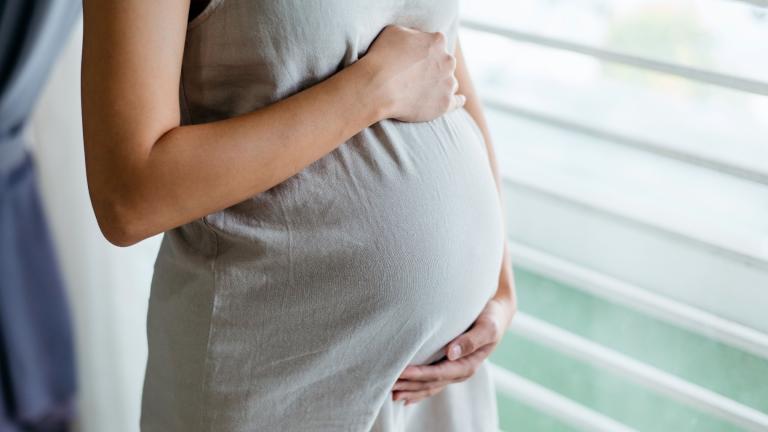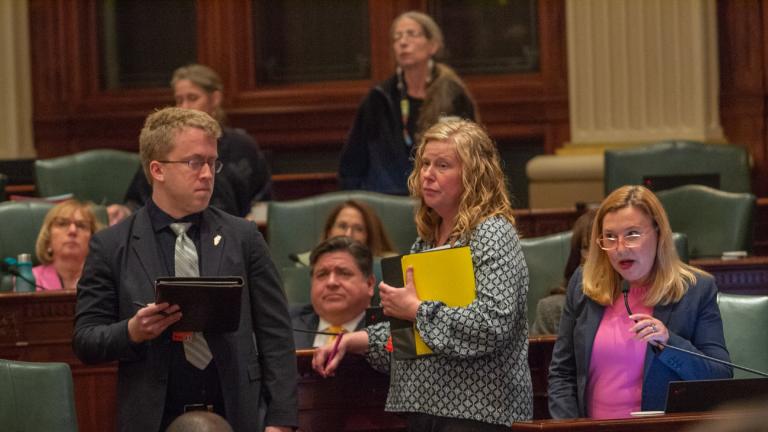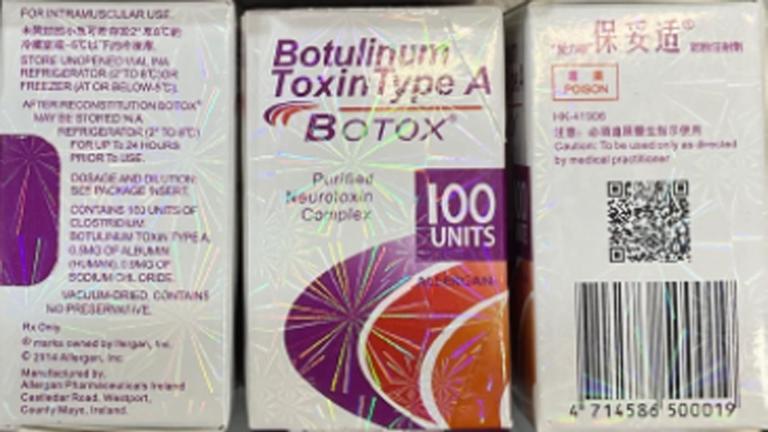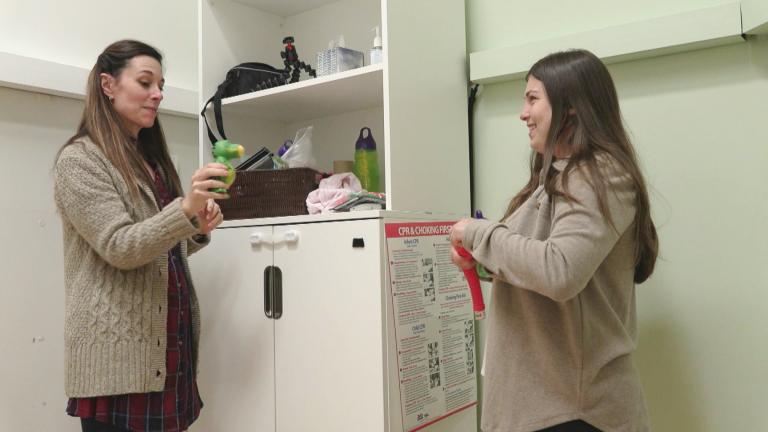 Milk and Moon Lactation Counseling LLC in Spring Valley, Ill., is a milk depot and donor milk dispensary in partnership with the Mothers’ Milk Bank of the Western Great Lakes. (Courtesy of Milk and Moon Lactation Counseling)
Milk and Moon Lactation Counseling LLC in Spring Valley, Ill., is a milk depot and donor milk dispensary in partnership with the Mothers’ Milk Bank of the Western Great Lakes. (Courtesy of Milk and Moon Lactation Counseling)
Alisha Lopez was a new mother to baby Hazel this past summer when she learned from lactation consultants that she was producing more breast milk than was necessary to feed her baby.
She made the decision to donate her breast milk after seeing firsthand as a nurse how donor breast milk can be used to help sick and premature babies in neonatal intensive care units.
Lopez pumped milk and stored it in bags in her fridge and freezer from July through early October. When Lopez made her first milk donation last week, the donation came out to 395 ounces of milk.
“It was just the satisfaction of knowing that I was helping a mom who really needed that milk and helping their baby grow in their time of need,” said Lopez, who lives in Willowbrook.
Demand for donor breast milk has been growing as the U.S. continues to recover from last year’s infant formula shortage that left many store shelves empty following a host of supply chain issues and product recalls. The Mothers’ Milk Bank of the Western Great Lakes, a nonprofit that works to pasteurize and distribute donated breast milk to families and NICUs in Illinois and Wisconsin, has seen a 32% increase in milk distribution across both states since that time, according to program manager Susan Urbanski.
“Right now, we are very grateful to say that we are meeting that increased demand, but it’s a day-to-day thing,” Urbanski said.
Donors in Illinois have donated nearly 600,000 ounces of milk to the Milk Bank WGL since the formula shortage, Urbanski said. That amounts to 150,000 4-ounce bottles, the bottle size the donor milk is typically distributed in. The organization dispensed a record high of 64,000 ounces of donor milk, or 16,000 bottles, across both Illinois and Wisconsin in August.
One of the Milk Bank’s partner milk depots and dispensaries, the Birth Center of Chicago in North Center, has also seen a sharp increase in demand.
The Birth Center has been distributing anywhere from 60 to 80 4-ounce bottles of donated breast milk per month for the last six months. That’s compared to the 20 to 30 bottles the center had on hand in its first two orders through the Milk Bank WGL in 2021, according to outreach and education coordinator Ariel Swift.
Swift said increased web traffic and word-of-mouth could be some of the reasons for the increased demand for donor milk that the Birth Center is seeing.
 Alisha Lopez, of Willowbrook, with her baby Hazel on Oct. 8, 2023. Lopez made her first breast milk donation last week. (Courtesy of Milk Bank WGL)
Alisha Lopez, of Willowbrook, with her baby Hazel on Oct. 8, 2023. Lopez made her first breast milk donation last week. (Courtesy of Milk Bank WGL)
Families might choose to use donor milk for a variety of reasons, including premature birth, adoption, surrogacy and parents who are same-sex couples. There are also cases of certain medical conditions where a parent might not be able to provide their own breast milk or cases where a parent isn’t advised to breastfeed while taking certain kinds of medication.
Also, breastfeeding is hard, Urbanski said.
“There are lots of moms that struggle, particularly in the beginning and especially with their first child, to establish a really good breastfeeding relationship,” Urbanski said. “We can provide that bridge while a mom tries to find a lactation consultant to work with to really get her own supply where it needs to be.”
Urbanski said donor milk can also offer antibodies and help to establish a baby’s immune system in ways that are not found in other feeding options for babies.
The Milk Bank WGL has several depot locations for donors to drop off their milk and dispensary locations for families to get quick access to screened, tested and pasteurized donor milk in the community. The organization also works directly with hospitals and outpatient families with significant clinical needs to provide them with milk on a more long-term basis.
At the Birth Center, a 4-ounce bottle of donor milk costs $20. The Birth Center doesn’t receive profit from the sale because it only charges for the amount it costs to order the milk and any associated shipping fees through its partnership with Milk Bank WGL, Swift said.
Swift said there’s a special relationship Birth Center staff has with families either picking up or dropping off milk.
“Most of the families who are coming to us who are buying milk are usually a little bit frazzled and they’re usually sleep-deprived and they’re probably in a situation where it feels really difficult for them,” Swift said. “Even if they’re not clients of the Birth Center, we’re trying to find out, ‘How are you doing and what’s it been like? Are there any other resources that we can give you to help with this postpartum period?’”
On the flip side, there are also a variety of reasons why someone might choose to donate milk. About 10-15% of the donors at Milk Bank WGL are donating after the loss of a baby, Urbanski said.
“Sometimes they choose to pump specifically for donations to honor their baby’s legacy, so they know that the memory of their baby can help another baby to thrive,” Urbanski said.
 (Courtesy of Milk Bank WGL)
(Courtesy of Milk Bank WGL)
U.S. Sens. Tammy Duckworth (D-Illinois) and Marco Rubio (R-Florida) introduced legislation last month aimed at expanding access to donated breast milk at milk banks nationwide.
The Access to Donor Milk Act of 2023 would give $3 million in emergency funding to FDA-registered, nonprofit donor milk banks experiencing a rapid increase in demand for milk. It would also establish a donor milk awareness campaign and allow state agencies to use excess funds from WIC — or the Special Supplemental Nutrition Program for Women, Infants, and Children — for the collection, transfer and distribution of donor milk.
The act would also require the Food and Drug Administration to convene a public meeting with stakeholders to develop guidance on best practices for donor milk donation, processing, storage and distribution.
Urbanski said a public awareness campaign would make “great strides” toward helping the organization keep meeting demand it’s seeing.
The Milk Bank WGL announced Wednesday that it was expanding to a larger building in Elk Grove Village that will double the organization’s space and include a lab that will accommodate the processing of thousands of ounces of milk each day.
“This is an industry of really rapid growth because what ends up happening is as people see the impact that donor milk has for these families and for these babies, everybody then wants to get involved because it truly is saving lives,” Urbanski said. “As much as everybody knows about blood banking and knows the importance of donor blood, we want everyone to have that same familiarity with donor milk and the importance of donor milk for babies that need it.”
Contact Eunice Alpasan: @eunicealpasan | 773-509-5362 | [email protected]








